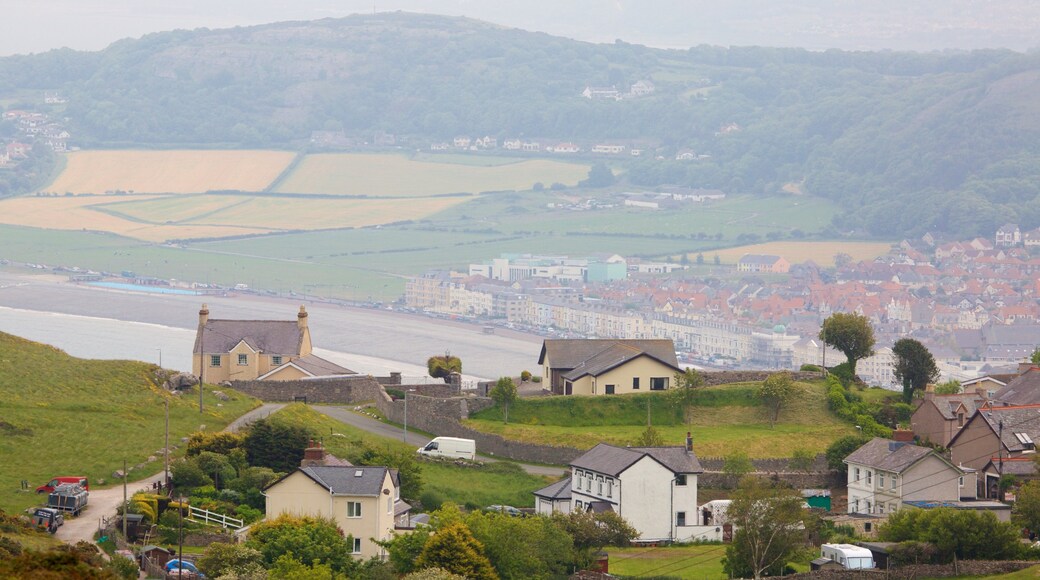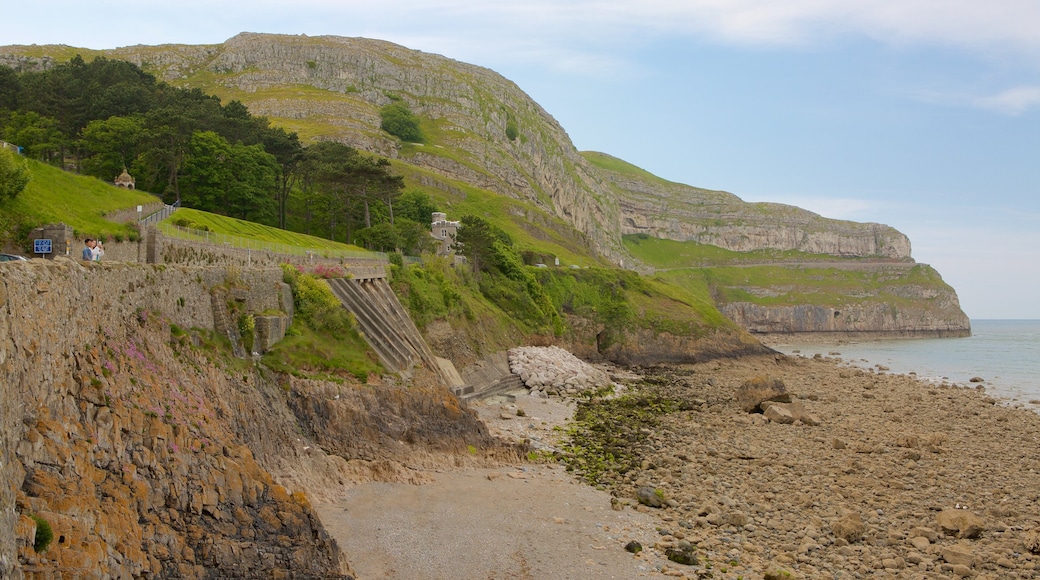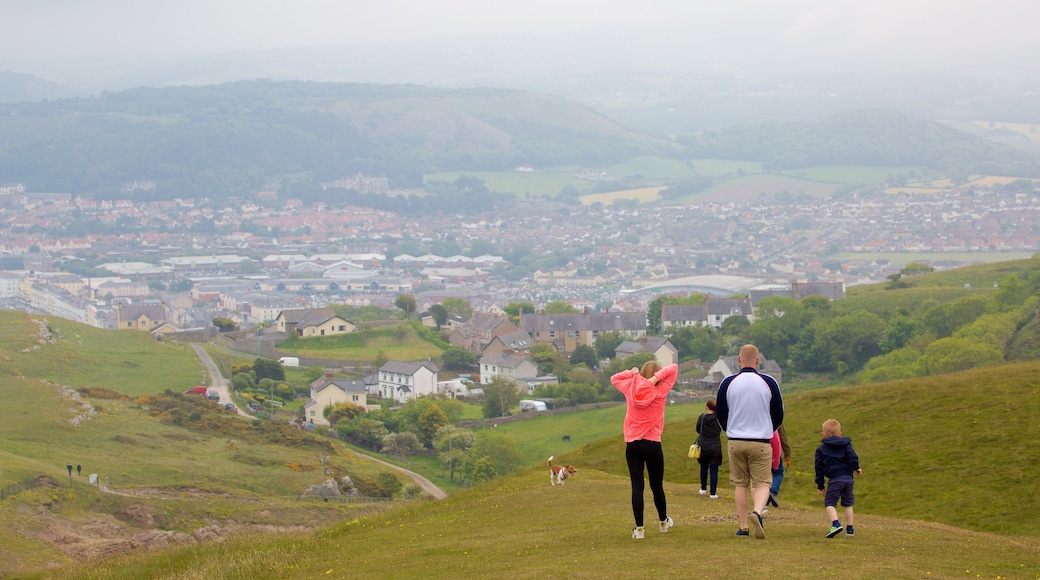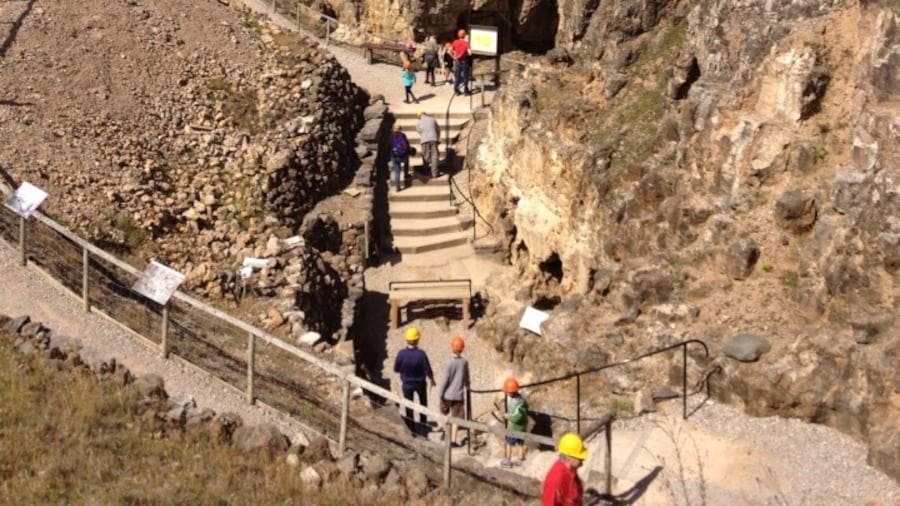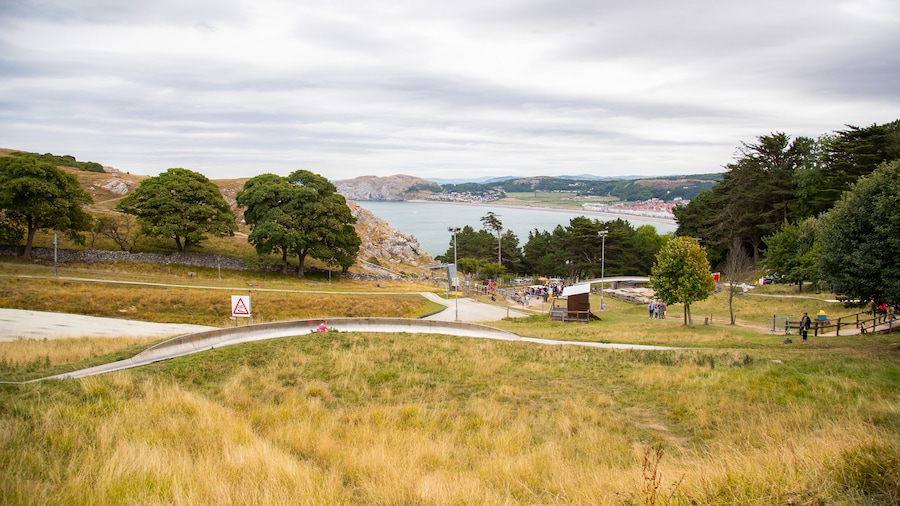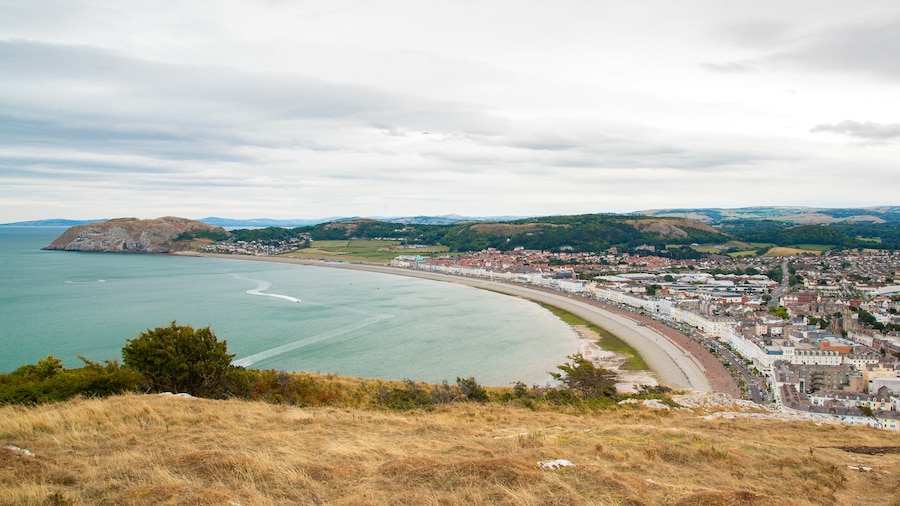The Great Orme remains a point of interest for tourists, who venture to its 207 metre summit to enjoy fantastic views across the Irish Sea and the beautiful Victorian town of LlandudnoOpens in a new window below. There are numerous parks offerings a range of walking trails along the summit, which is run as a nature reserve by Conwy County Borough Countryside Service.
A section of the North WalesOpens in a new window Path, which spans 60 miles between PrestatynOpens in a new window in the east and Bangor in the west, runs along the Great Orme. The area is rich is rare flora and fauna and is the only known site of the critically endangered Wild Cotoneaster, of which only six wild plants are known.
The headland is composed of limestone, which began forming over 300 million years ago, yet the exact beginnings of the rock remain shrouded in mystery. Fossilised remains of ancient creatures are to be found everywhere, providing a thrilling experience to anyone interested in history or palaeontology.
There are a series of mines and caves running underneath the Orme’s impressive structure. The copper mine is estimated to have produced enough copper to make around 2,000 tons of bronze during the Bronze Age. Visitors can take tours of the Great Orme mines, which have been acclaimed as the “best pre-Roman visitor experience in the UK”.
Nature’s own museum, the Great Orme is sure to overwhelm the senses and provide an amazing insight into Palaeolithic Britain.
